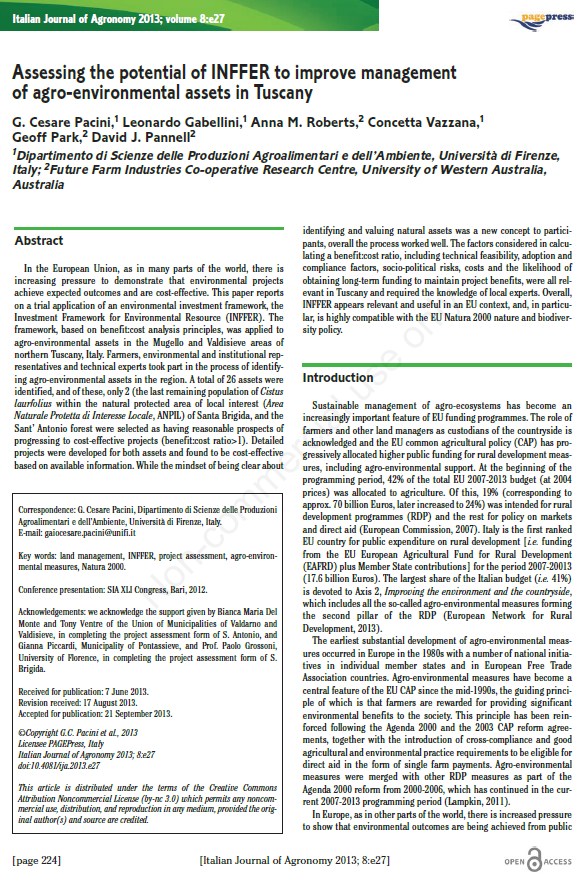Testing INFFER in Europe
This article described the experience of piloting INFFER in Tuscany.
Pacini, G.C., Gabellini, L., Roberts, A.M., Vazzana, C., Park, G. and Pannell, D.J. (2013). Assessing the potential of INFFER to improve the management of agri-environmental assets in Tuscany, Italian Journal of Agronomy 8, e7. DOI: 10.4081/ija.2013.e27
Abstract
In the European Union, as in many parts of the world, there is increasing pressure to demonstrate that environmental projects achieve expected outcomes and are cost-effective. This paper reports on a trial application of an environmental investment framework, the Investment Framework for Environmental Resource (INFFER). The framework, based on benefit:cost analysis principles, was applied to agro-environmental assets in the Mugello and Valdisieve areas of northern Tuscany, Italy. Farmers, environmental and institutional representatives and technical experts took part in the process of identifying agro-environmental assets in the region. A total of 26 assets were identified, and of these, only 2 (the last remaining population of Cistus laurfolius within the natural protected area of local interest (Area Naturale Protetta di Interesse Locale, ANPIL) of Santa Brigida, and the Sant’ Antonio forest were selected as having reasonable prospects of progressing to cost-effective projects (benefit:cost ratio>1). Detailed projects were developed for both assets and found to be cost-effective based on available information. While the mindset of being clear about identifying and valuing natural assets was a new concept to participants, overall the process worked well. The factors considered in calculating a benefit:cost ratio, including technical feasibility, adoption and compliance factors, socio-political risks, costs and the likelihood of obtaining long-term funding to maintain project benefits, were all relevant in Tuscany and required the knowledge of local experts. Overall, INFFER appears relevant and useful in an EU context, and, in particular, is highly compatible with the EU Natura 2000 nature and biodiversity policy.
Link to the paper at the journal web site (the paper is freely downloadable)


